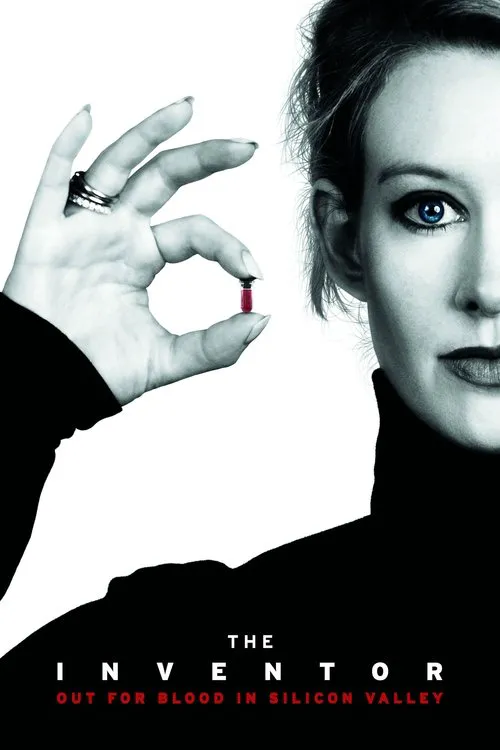The Inventor: Out for Blood in Silicon Valley

Plot
In the early 2000s, Elizabeth Holmes, a brilliant and charismatic young woman from a traditional family in California, began her journey to revolutionize the medical industry with her magical invention - a blood-testing device that could allegedly detect diseases with unprecedented accuracy and speed. Holmes' vision was to bring this technology to every corner of the globe, transforming the healthcare system and making quality medical care accessible to billions of people worldwide. Born in 1984, Holmes was a self-proclaimed genius who dropped out of Stanford University after just one year to pursue her entrepreneurial dreams. In 2003, she founded Theranos, a biotech company that eventually became a billion-dollar behemoth in Silicon Valley, the hub of the tech industry. With an initial investment of just $500,000, Holmes managed to lure major investors like Larry Ellison, the co-founder of Oracle, and Betsy DeVos, the Secretary of Education, with her captivating charm and a PowerPoint presentation that showcased the potential of her invention, the Edison machine. The Edison machine was a sleek, futuristic device that could allegedly detect a wide range of diseases, including cancer, HIV, and diabetes, by analyzing just a few drops of blood. It was claimed to be faster, cheaper, and more accurate than traditional blood-testing methods, making it a game-changer in the medical industry. Holmes promised that Theranos would disrupt the $10 trillion global healthcare market and make her one of the richest people in the world. As Theranos' star soared, Holmes became the toast of Silicon Valley. She was celebrated as a visionary and a pioneer, just like Steve Jobs, the legendary co-founder of Apple. Her meteoric rise to fame was fueled by her charisma, intelligence, and an uncanny ability to build relationships with influential people, including celebrities, politicians, and top executives. Behind the scenes, however, things were far from perfect. Theranos was facing serious technical challenges, and the Edison machine was not living up to its promised capabilities. The company's engineers and scientists were struggling to make the device work, and Holmes was increasingly pushing them to speed up development, often with disastrous consequences. Despite repeated warnings from her own team, Holmes insisted on moving forward, convinced that she was on the cusp of something revolutionary. As Theranos' troubles grew, Holmes began to use her incredible charm and persuasive powers to hide the truth from investors, regulators, and even her own employees. She created fake data, manipulated test results, and engaged in other forms of deception, all to keep the myth of the Edison machine alive. Meanwhile, she continued to dazzle investors and customers with her mesmerizing presentations and confident predictions about the company's future. The final straw came in 2015 when the Wall Street Journal published a scathing exposé on Theranos and its alleged failures. The article revealed that the Edison machine was not functioning as promised and that the company was using other companies' machines to run tests, rather than its own technology. The backlash was immediate, and the stock price plummeted. Investors, who had sunk billions of dollars into Theranos, began to withdraw their funds, and the company was forced to lay off hundreds of employees. In the end, it was a slow-motion implosion of the most spectacular sort. Holmes, who had once been touted as a visionary and a leader, was exposed as a master deceiver, and her reputation was left in tatters. Theranos' valuation, which had once reached an astonishing $9 billion, was reduced to zero. The company was dissolved, and its assets were sold off piecemeal. As a cautionary tale, the rise and fall of Theranos offers a glimpse into the darker side of the tech industry, where hype and hubris can lead even the most brilliant minds down a path of ruin. In Elizabeth Holmes' case, it highlights the dangers of unchecked ambition and the corrupting influence of power and money. While Holmes has maintained her innocence in court, many have been left to wonder: could a more honest and transparent approach have saved Theranos from itself? The story of Theranos serves as a reminder that the line between innovation and deception is often a thin one.
Reviews
Recommendations




